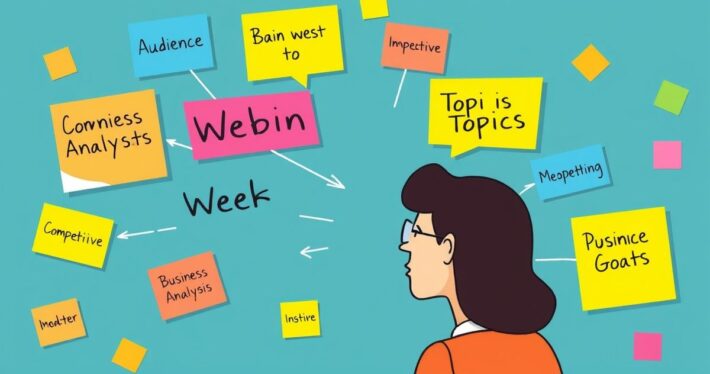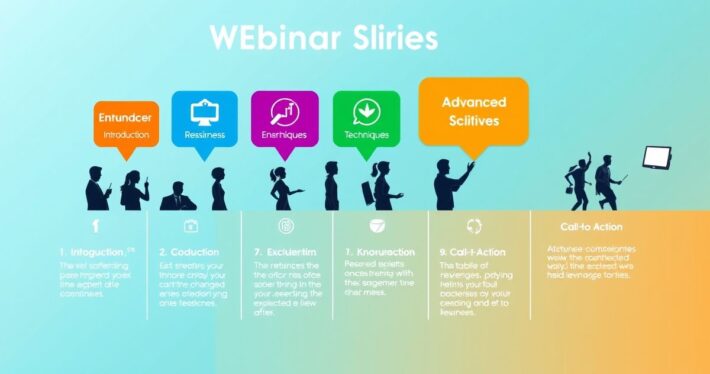How to Validate a Webinar Topic Before Committing

Ever spent weeks planning a webinar only to watch attendance flatline or engagement fizzle out? I’ve been there, and let’s be honest—it stings. The truth is, the success of your webinar starts long before you hit “Go Live.” It begins with choosing the right topic. But how do you know if your idea will resonate with your audience? That’s where topic validation comes in.
Validation isn’t just a box to check; it’s the foundation of a high-converting webinar. In this guide, I’ll walk you through proven strategies to test your webinar topic before committing your time, effort, and resources. Whether you’re a seasoned marketer or a newbie creator, these steps will help you avoid costly mistakes and craft webinars your audience can’t resist.
Why Validating Your Webinar Topic Matters
Before we dive into the “how,” let’s talk about the “why.” Why is validation so critical? Imagine spending hours creating a webinar on a topic your audience doesn’t care about. (Ouch.) Validation ensures your topic aligns with your audience’s needs, solves a real problem, and fits within their budget or priorities.
It’s like building a house—would you start without checking the foundation? Of course not. Validation is your blueprint for webinar success.
Step 1: Define Your Target Audience
Who exactly are you speaking to? The more specific you are, the better. For example, instead of targeting “entrepreneurs,” narrow it down to “female entrepreneurs in the tech industry looking to scale their startups.”
Why? Because specificity helps you craft a message that speaks directly to their pain points. One of my clients once struggled with low webinar attendance until we refined their audience profile—sure enough, their next webinar sold out.
Pro Tip: Use tools like audience surveys or social media analytics to gather insights about your ideal attendee.
Step 2: Research Existing Demand
Now that you know your audience, it’s time to see if your topic has legs. Here’s how:
- Google Trends: Is your topic trending or declining in interest?
- Forums and Groups: Check platforms like Reddit or Facebook Groups for discussions related to your topic.
- Competitor Analysis: What webinars are your competitors hosting? What’s getting traction?
Real-World Example: A fitness coach wanted to host a webinar on “Peloton alternatives.” A quick Google Trends search showed a spike in interest, and competitor analysis revealed a gap in the market. The result? A fully booked webinar and 30% higher conversions than their previous events.
Step 3: Test Your Topic with a Micro-Commitment
Why gamble on your topic when you can test it? Create a low-effort, high-impact way to gauge interest, such as:
- Social Media Polls: Ask your audience directly.
- Email Surveys: Include open-ended questions to uncover hidden pain points.
- Lead Magnet: Offer a free checklist or guide related to your topic and track downloads.
Here’s a little secret: People vote with their actions, not their words. If they’re willing to give you their email address for a freebie related to your topic, you’re onto something.
Step 4: Analyze Engagement Metrics
If you’ve run webinars before, dig into your analytics. Which topics had the highest attendance, engagement, and conversions? Look for patterns.
For instance, a B2B SaaS client noticed their webinars on “automating workflows” consistently outperformed those on “team collaboration.” This insight helped them double down on the right topic—and double their ROI.
Pro Tip: Use webinar tools with robust analytics (like ours) to track metrics like drop-off rates, Q&A engagement, and post-event conversions.
Step 5: Build a Mini-Offer to Gauge Interest
Here’s where it gets interesting. Create a small, low-cost offer tied to your webinar topic. For example, if your webinar is about “mastering Instagram Reels,” offer a $20 guide or template.
Why? Because people are more likely to spend money on something they genuinely want. If your offer flops, it’s a red flag your topic might not resonate.
Expert Insight: I’ve seen clients pivot their entire webinar strategy based on mini-offer performance. It’s like having a crystal ball for your audience’s preferences.
Step 6: Leverage AI-Powered Tools for Fast Validation
Let’s be honest—validation can feel overwhelming. That’s where AI-powered tools come in. Our Webinar Slide Outline Creator, for instance, helps you structure your content to balance education and engagement. Meanwhile, the Webinar Offer Builder ensures your offer stacks value and positions it perfectly.
These tools don’t just save time; they give you confidence your topic will hit the mark.
Common Mistakes to Avoid
Even with the best intentions, it’s easy to slip up. Here are a few pitfalls to watch out for:
- Being Too Broad: A vague topic won’t captivate anyone. Aim for specificity.
- Ignoring Data: Don’t rely on gut feelings alone. Let the data guide you.
- Overcomplicating the Process: Validation doesn’t have to be time-consuming. Focus on high-impact activities.
Final Thoughts
Validating your webinar topic isn’t just about reducing risk—it’s about maximizing results. By following these steps, you’ll ensure your webinar resonates with your audience, solves a real problem, and drives conversions.
So, the next time you’re brainstorming webinar ideas, ask yourself: Does this topic pass the validation test? (And if you’re not sure, go back to Step 1.)
Now it’s your turn. What’s your go-to strategy for validating webinar topics? Share your thoughts in the comments—I’d love to hear from you!
By following this guide, you’ll not only validate your webinar topic effectively but also position yourself as a trusted expert in your niche. Happy webinar planning!



